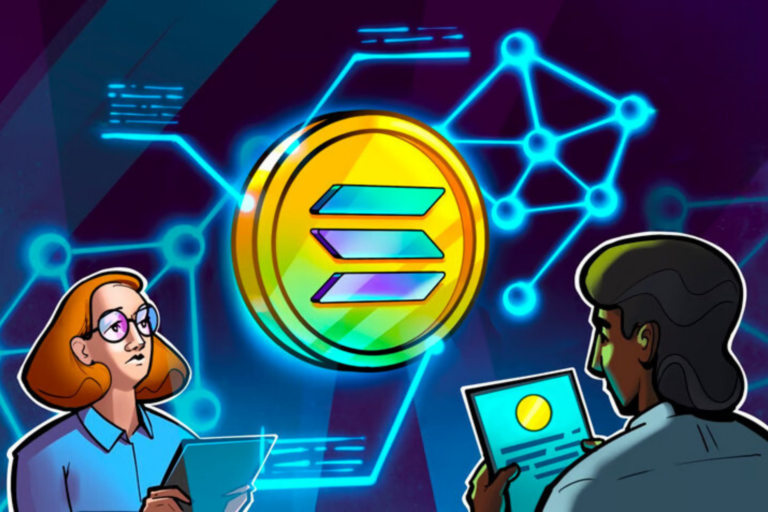Bitcoin runes, a term that may sound like something out of a fantasy novel, have actually found a place in the modern technological landscape. This article aims to demystify Bitcoin runes, exploring their origins, functionality, applications, and significance in the world of cryptocurrencies.

What are Bitcoin Runes?
1. What are Bitcoin Runes?
Bitcoin Runes represent a relatively new innovation within the cryptocurrency ecosystem. They are designed to enhance the functionality of Bitcoin, the pioneering digital currency introduced by an anonymous entity known as Satoshi Nakamoto in 2008. To understand Bitcoin Runes, it’s essential first to grasp the foundational principles of Bitcoin itself.
1.1. What is Bitcoin?
Bitcoin is a decentralized digital currency that operates on a peer-to-peer network. Unlike traditional fiat currencies, Bitcoin is not controlled by any central authority, such as a government or financial institution. Instead, it relies on blockchain technology, a distributed ledger that records all transactions across a network of computers.
1.2. What are Bitcoin Runes?
Bitcoin Runes are a type of cryptographic asset built on top of the Bitcoin blockchain. They aim to provide additional functionalities and features that the original Bitcoin protocol does not natively support. The concept of Bitcoin Runes can be likened to the introduction of smart contracts on the Ethereum blockchain, which expanded Ethereum’s capabilities beyond simple transactions.Runes are assets that are included in the Bitcoin blockchain through a process called etching (Etching – is the technology to create Runes, while Inscription is the technology to create BRC-20 tokens). Each Runes is unique and has specific properties such as name, symbol, divisibility, and once set cannot be changed.
2. The technical foundation of Bitcoin Runes

The technical foundation of Bitcoin Runes
2.1. Blockchain technology and Smart contracts
To comprehend Bitcoin Runes, it’s crucial to understand blockchain technology and smart contracts. Blockchain is a decentralized ledger that records transactions in a secure and immutable manner. Each block in the chain contains a list of transactions, and once a block is added to the chain, it cannot be altered.Smart contracts are self-executing contracts with the terms of the agreement directly written into code. These contracts automatically execute and enforce the terms when specific conditions are met. Ethereum is the most well-known platform for smart contracts, but the concept can be applied to other blockchains as well.
2.2. Bitcoin’s limitations and the Need for Runes
While Bitcoin is highly secure and decentralized, its original design focuses primarily on peer-to-peer transactions and store of value. It lacks the native capability to execute complex smart contracts or support decentralized applications (dApps). This limitation has led to the development of various Layer 2 solutions and sidechains to extend Bitcoin’s functionality.Bitcoin Runes address these limitations by introducing a new layer of functionality to the Bitcoin blockchain. They enable the creation and execution of smart contracts, allowing for more sophisticated interactions and applications.
3. How do Bitcoin Runes work?

How do Bitcoin Runes work?
3.1. Structure of Bitcoin Runes
Bitcoin Runes are implemented as a Layer 2 solution, meaning they operate on top of the existing Bitcoin blockchain. This approach leverages Bitcoin’s security and decentralization while introducing new features. The key components of Bitcoin Runes include:Rune contracts: These are smart contracts written specifically for the Bitcoin blockchain. They define the rules and conditions under which certain actions can be performed.

Rune tokens: Similar to ERC-20 tokens on Ethereum, Rune tokens represent various assets or utilities within the Bitcoin Rune ecosystem. These tokens can be used for a wide range of purposes, such as representing ownership of real-world assets or facilitating decentralized finance (DeFi) applications.Rune nodes: These are specialized nodes within the Bitcoin network that support the execution of Rune contracts and the handling of Rune tokens. They play a crucial role in ensuring the integrity and functionality of the Bitcoin Rune system.
3.2. Process of creating and using Bitcoin Runes
Creating rune contracts: Developers write smart contracts using a scripting language compatible with the Bitcoin blockchain. These contracts define the terms and conditions for various transactions and interactions.Deploying rune contracts: Once written, Rune contracts are deployed to the Bitcoin blockchain. This deployment process involves broadcasting the contract code to the network, where it is validated and recorded in a block.Executing rune contracts: When specific conditions defined in a Rune contract are met, the contract automatically executes the agreed-upon actions. This execution is facilitated by Rune nodes, which ensure that the contract’s terms are fulfilled accurately.Issuing rune contracts: Developers can create and issue Rune tokens to represent various assets or utilities. These tokens can be transferred, traded, or used within decentralized applications built on the Bitcoin Rune ecosystem.
4. How to mint Runes?

How to mint Runes?
Minting Runes involves creating new Runes tokens on the Bitcoin blockchain. This process typically requires the use of specific platforms or tools designed for this purpose. Here are some detailed steps and examples of how to mint Runes using different platforms:
- Rune Bitcoin: Rune Bitcoin is a project focused on enabling the minting and trading of Runes tokens. Here’s a step-by-step guide to minting Runes on this platform:
- Luminex: Luminex is another platform that allows users to mint Runes tokens.
- UniSat Wallet: UniSat Wallet offers a straightforward way to mint Runes directly from your wallet.
- RuniGun: RuniGun is a project that provides minting services for Runes.
5. Potential applications of Bitcoin Runes

Decentralized Finance (DeFi)
One of the most promising applications of Bitcoin Runes is in the realm of decentralized finance (DeFi). DeFi encompasses a wide range of financial services, including lending, borrowing, trading, and yield farming, all conducted on decentralized platforms. Bitcoin Runes enable the creation of DeFi applications on the Bitcoin blockchain, leveraging its security and widespread adoption.
Tokenization of Assets
Bitcoin Runes can facilitate the tokenization of real-world assets, such as real estate, commodities, and intellectual property. By representing these assets as Rune tokens, they can be easily traded and transferred on the blockchain, increasing liquidity and accessibility.
Decentralized Applications (dApps)
With the introduction of Rune contracts, developers can build decentralized applications (dApps) on the Bitcoin blockchain. These dApps can serve various purposes, from gaming and social media to supply chain management and identity verification.
Cross-Chain Interoperability
Bitcoin Runes can also enhance cross-chain interoperability, allowing assets and data to move seamlessly between different blockchain networks. This interoperability opens up new possibilities for collaboration and innovation across the broader cryptocurrency ecosystem.
6. Future prospects of Bitcoin RunesContinued innovation
The development of Bitcoin Runes represents a significant step forward in the evolution of the Bitcoin ecosystem. As the technology matures and more developers and users engage with Bitcoin Runes, we can expect continued innovation and the emergence of new applications and use cases.
Integration with existing infrastructureIntegrating Bitcoin Runes with existing cryptocurrency infrastructure, such as wallets, exchanges, and DeFi platforms, will be crucial for widespread adoption. Efforts to make Bitcoin Runes compatible with popular tools and services will likely accelerate their acceptance and usage.
Community and governanceThe success of Bitcoin Runes will also depend on the strength and engagement of the community supporting them. Decentralized governance models, similar to those seen in other blockchain projects, may play a role in shaping the future development and direction of Bitcoin Runes.
7. Conclusion
Bitcoin runes represent a fascinating intersection of cryptography and blockchain technology. They offer enhanced security, transparency, and flexibility, making them valuable tools for a wide range of applications. While they come with certain challenges and limitations, ongoing developments in cryptography and blockchain technology hold the promise of addressing these issues and unlocking new possibilities for Bitcoin runes in the future. As the world of cryptocurrencies continues to evolve, Bitcoin runes are likely to play an increasingly important role in shaping the future of secure and decentralized digital transactions.



